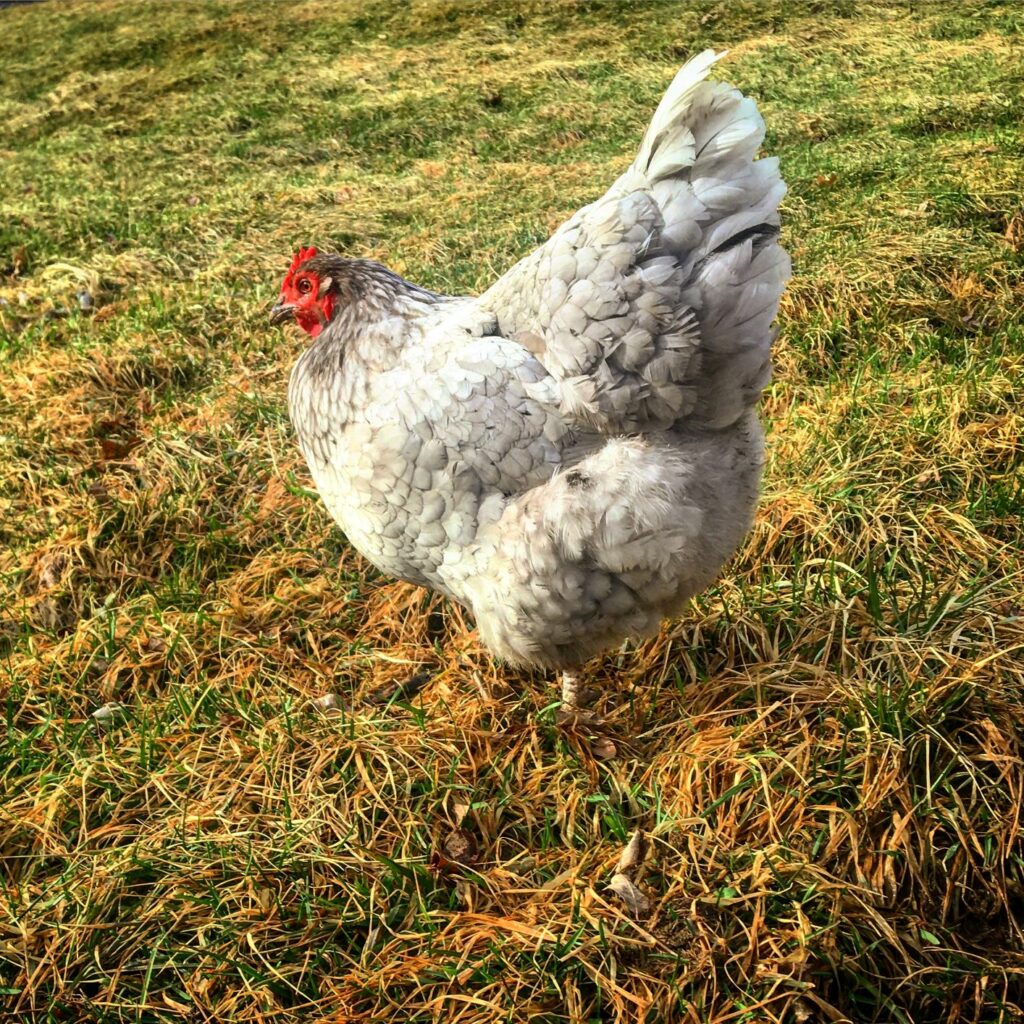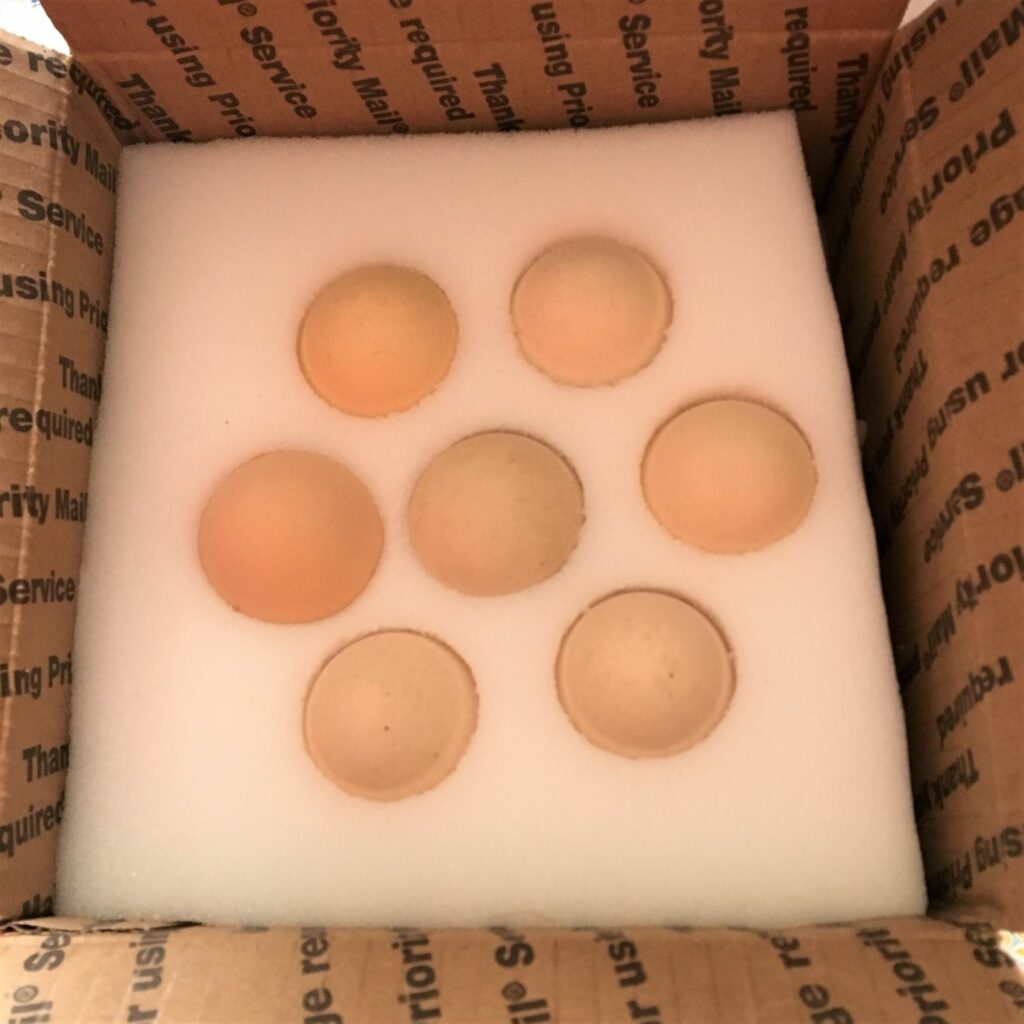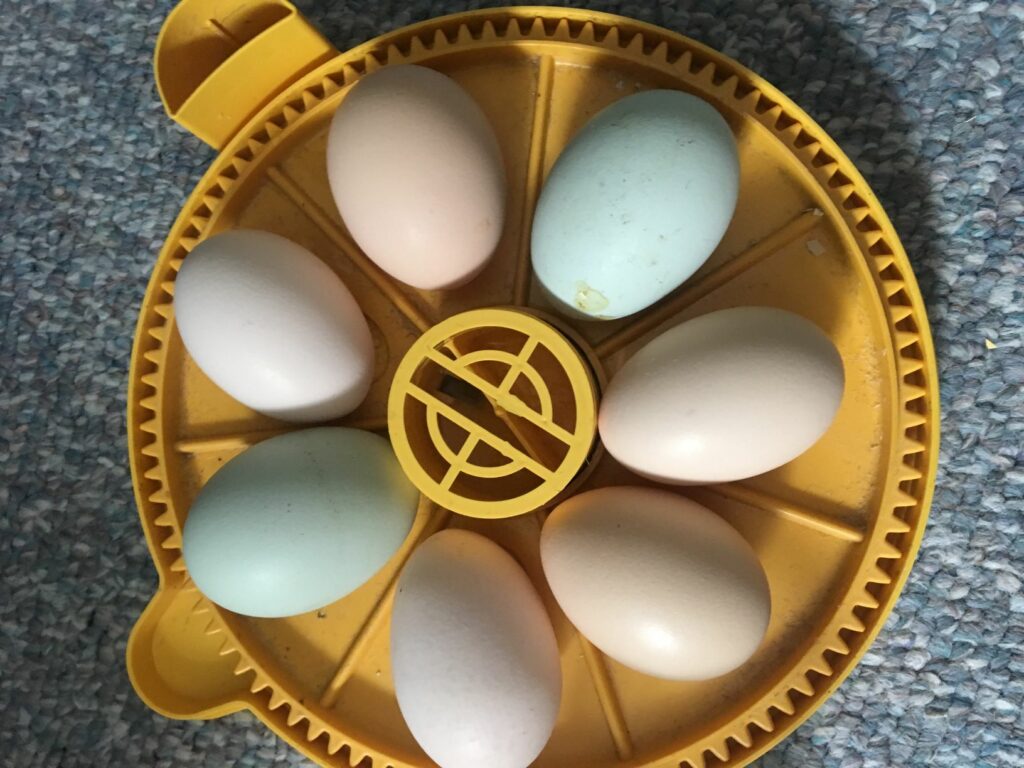Do you have chickens? What breeds? Have you made the plunge and started hatching your own eggs yet?
Here’s the thing about chickens… they become a bit addictive!
OK, I’m going to level with you. They are more than just a little bit addictive.
We’ve had chickens for years; in fact, I grew up with chickens. I have some very fond memories of playing in the hen house, collecting eggs, and hanging out with the ladies. My parents original flock consisted of barred rocks, they dabbled in some meat birds, geese, and turkeys over the years. When the original flock of barred rocks became aged and their production declined, they switched over to Rhode Island Reds, followed by Red Sex Links.

As I got older, I realized that there were dozens of breeds of chickens and dozens of colors. I even learned that there were chickens that laid blue and green eggs! I was young, naïve, and fascinated! What can I say?
I. Was. Hooked.
Yes. Hooked on poultry.
I poured over farm and poultry catalogues, researched breeds on the internet, and fell in love with Speckled Sussex’s and Blue Orpingtons. How my teenage heart longed for some Blue Orpingtons! At the time the breed wasn’t common in the states, and they definitely were well out of my price range.
To further fuel my chicken obsession, one Christmas (I was in high school at the time) my parents asked what I would like – I eagerly asked for what any chicken obsessed teenager wants, an incubator.
My first incubator was a still air Styrofoam Hova-Bator. Through some very unscientific research I determined that the best place in the house for the incubator would be the living room table. I’m not sure my mother shared the same level of excitement as I did. I though it was a great spot, centrally located, out of the way from the family dogs, I could check on my eggs before school and as soon as I got home. My first incubator, like any still air Styrofoam incubator was a bit finicky, but reliable enough. By the spring I was regularly hatching fun and exciting barnyard mixes from my flock. I even made a amount of money to further fuel my poultry obsession by selling those chicks to friends and neighbors. I think I supplied half the town with chicks!

One of the great things about hatching eggs is that you can add new bloodlines to your flock and acquire rarer and harder to find breeds. Some of the rarer breeds and breeder quality birds can be a bit pricey – they are worth the money, as breeders spend years and years breeding for quality birds. Hatching out eggs can be a cost-effective way to add to your flock while staying on a budget.
Here’s this thing about hatching eggs, it can be tricky business. It takes 21 days to go from egg to a chick. You’ll have the best luck hatching eggs with a quality incubator or an experienced broody hen. The other way to improve your hatching success is to use eggs from your own flock or purchase eggs from a local breeder. If you can’t find the breeds or colors that you’re local for from a nearby breeder another option is to order and have eggs shipped right to your front door.
Yep. Shipping eggs through the mail. It’s a real thing.
You’re probably thinking, aren’t they delicate?

Yes, they are delicate. Shipping can be rough on them. They are potentially subjected to temperature changes, rough traveling conditions, air pressure changes, and the possibility for X-ray inspection. Often shipped eggs won’t have the same hatching success as locally picked up (or eggs from your own flock). It can be a bit of a risk and most sellers don’t guarantee a successful hatch.
With that being said, it’s something that we occasionally do. I enjoy the process of hatching chicks, it’s an amazing journey, and there are so many breeds out there that I want to get my hands on. I’ve saved money adding new breeds, or colors by hatching shipped eggs. However, other breeds, not so much. Hatching out eggs that have been shipped is always a gamble. Sometimes it plays out in your favor, other times, not so much.
Last week we ordered 12 Red Orpington Hatching eggs from a breeder in Mississippi. Those little eggs traveled over 1200 miles. That’s a long way to go!

When our local post office received our eggs they gave a call to let us know that they had them in their possession. We prefer to pick up eggs at the post office, that way they aren’t left out in the elements – extreme heat and cold can be detrimental to those little embryo’s. This time of year we regularly experience freezing temperatures and we’d prefer not to risk it.
Off to the post office we went. We picked the eggs up (it was cold any snowing), returned home, carefully unpacked and inspected the eggs in less than 20 minutes. The seller did a fantastic job packing the eggs, in fact it was the best packing job I had ever seen. Each egg was perfect and intact.

After 24 hours of settling we placed the eggs in our Brinsea incubator, said a quick prayer, and walked away. One of the hardest parts of hatching eggs is the waiting and not interfering. I cannot stress enough that being patient is a huge part of hatching eggs. I’m not an overly patient person. When I get an idea in my head, I want to charge full steam ahead. With shipped eggs they’ve likely experienced a bumpy trip on their way to you and patience is definitely a virtue.

At the 7 day mark we candled the eggs and were delighted to see that 5 of the 12 eggs were developing!
We’ll candle again at the 14 day mark, then again at 19 days. At that time the eggs will go on “lockdown” and we will leave them be until they hatch!
If you’re interested in trying to hatch shipped eggs here are a few tips:
- Distance matters – when it comes to having eggs shipped, It’s better to order eggs from a closer source. Ordering and having eggs shipped from the opposite side of the country can have a huge impact (in a negative way) on your hatch rate. You’ll likely have better luck if they have a shorter travel. All of the things that we mentioned above, rough handling, air pressure changes, temperature fluctuation, and x-ray machines can impact your hatch rate.
- Temperature and weather – Try not to order your eggs during temperature extremes, that goes for both hot and cold weather. Keep the forecast in mind, if there is approaching bad weather it can cause delays at the post office. You don’t want your eggs sitting on the bag of an overly hot or cold truck.
- Patience – once your eggs arrive, you’ll want to carefully unpack them and inspect them for any cracks (you can use a bright flashlight to candle them). If any of the eggs have small hairline cracks you can try sealing them with some melted candle wax. We personally have not had any luck with sealing and hatching cracked eggs. You paid for the eggs, so it doesn’t hurt to at least try. You also want to allow your eggs to settle. This means allowing your eggs to sit upright in an egg carton (large end up) for 24 hours at room temperature.
- Air cells – The air cell is a small pocket of air that is located at the large end of the egg. Every egg has an air cell. The air cell in an egg provides the chick with air when it is ready to hatch and start breathing air on its own. As the chick starts breathing, there is a buildup of carbon dioxide in the egg, this process prompts the chick to break through the egg to get fresh air. One of the most common issues that you’ll see with shipped eggs is a damaged air cell. While they might be damaged, all is not lost! Rough handling during shipping can result in the air cell becoming detached or even misshapen. This is one of the reasons why you want to leave your eggs sitting upright for 24 hours, it’ll give the air cell a chance to settle.
After the 24 hours are up, you’re good to put them in your incubator or under your broody hen.
Be sure to check back soon to see an update on our hatching experience, and hopefully cute chick pictures!
Until next time…
Ashley


…those Tiffany blue eggs are gorgeous!